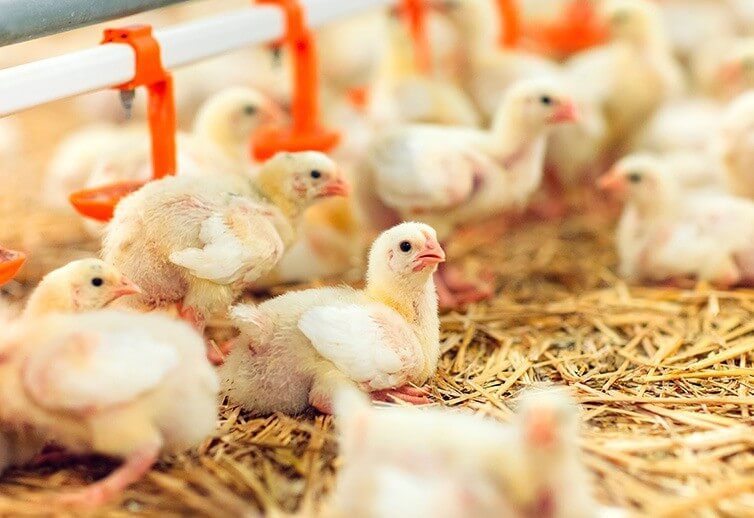About Us
Here are some of the use cases of our AI technologies in the poultry business :-
1. Health Monitoring and Disease Prevention
Predictive Health Analytics: AI can process vast amounts of data from various sources like sensors, wearables, and cameras to detect early signs of illness, stress, or abnormal behavior in poultry. By analyzing patterns in temperature, movement, and feeding behaviors, AI systems can identify anomalies and alert farmers to potential health issues before they escalate.
Early Disease Detection: AI systems are being used to monitor poultry health in real-time and predict outbreaks of diseases like avian influenza, coccidiosis, or Newcastle disease. These systems analyze historical data, genetics, environmental factors, and behavior to make early predictions, allowing farmers to take preemptive action, such as isolating affected birds or administering targeted vaccinations.
Automated Health Diagnostics: AI technologies like machine vision and image recognition can help identify physical signs of diseases or injuries by scanning poultry in real-time. This reduces human error, increases diagnostic accuracy, and speeds up the process.
2. Precision Feeding and Nutrition
AI-Based Feed Optimization: AI can optimize poultry diets based on individual bird needs, adjusting feed formulations based on age, weight, health status, and growth patterns. By analyzing data on feed consumption and growth rates, AI systems can recommend the right type and amount of feed for each bird or flock. This improves feed efficiency, reduces waste, and lowers feed costs, contributing to healthier birds and more sustainable farming practices.
Nutritional Monitoring: AI can also monitor and track the nutritional intake of poultry, ensuring they get the right balance of proteins, fats, and other nutrients. Using AI-based systems to track the effects of nutrition on bird growth and productivity enables farmers to refine feeding strategies for maximum efficiency.
3. Automated Health and Behavior Monitoring Systems
Computer Vision and Machine Learning: AI-powered computer vision systems are being used to monitor bird behavior in real-time. These systems can track individual birds, monitor their movement, and detect signs of abnormal behavior such as limping, lethargy, or aggression. This allows farmers to intervene earlier when a problem is identified, improving overall flock health and reducing mortality rates.
Behavioral Analytics: AI can analyze the behavior of poultry to identify stress indicators or patterns that may lead to diseases. Stress is a major contributor to poor poultry health and lower productivity, so detecting stress early helps farmers implement corrective actions like environmental changes (temperature, lighting, etc.) or modifying management practices.
AI-Powered Smart Cameras: Smart cameras equipped with AI algorithms track the activity and health of birds, providing valuable insights into their behavior. These systems can detect early signs of injury, bullying, or stress, allowing farmers to take action quickly to improve bird welfare.
4. Farm Management and Decision Support
Farm Automation Systems: AI-powered farm management systems automate routine tasks such as feeding, egg collection, and waste removal. This reduces labor costs and human error, while ensuring consistent and accurate operations. These systems can be integrated with other smart farm technologies to create a fully automated poultry operation.
Data-Driven Decision-Making: AI is helping farmers make more informed decisions by processing data from multiple sources, including sensors, weather forecasts, and market trends. AI tools can provide real-time insights into optimal conditions for poultry production, whether for egg-laying, meat production, or breeding. This allows farmers to fine-tune their operations for maximum output and efficiency.
Predictive Analytics for Productivity: AI can predict how flocks will perform based on various parameters like environmental factors, health data, and feed consumption. These predictive models allow farmers to adjust their practices to meet the expected needs of the flock, ensuring that productivity remains high and operational costs stay low.
5. Climate Control and Environmental Management
AI-Driven Environmental Control: AI systems monitor and optimize environmental conditions within poultry houses, including temperature, humidity, lighting, and airflow. These systems can make real-time adjustments to maintain the ideal conditions for poultry growth and comfort. A comfortable environment is crucial for maintaining the health and productivity of the birds.
Energy Efficiency: AI-powered systems also optimize energy consumption by adjusting heating, cooling, and ventilation systems based on current environmental conditions. This reduces energy waste and lowers operating costs, making poultry farming more sustainable and cost-effective.
Climate Prediction: By analyzing weather data and historical trends, AI can forecast climate conditions and help farmers prepare their poultry houses for potential weather disruptions, such as temperature fluctuations, heatwaves, or cold spells. Early warnings allow farmers to adjust the indoor environment to protect their flocks.
6. Egg Production and Quality Monitoring
Egg-Laying Prediction: AI tools can track egg-laying patterns by monitoring bird behavior and environmental conditions. By using this data, AI can predict when hens are most likely to lay eggs, allowing farmers to optimize egg collection schedules and improve egg quality.
Automated Egg Collection Systems: In commercial poultry farming, AI-powered automated egg collection systems reduce the need for human labor while improving the efficiency and hygiene of egg handling. These systems detect when eggs are laid and collect them without human intervention, reducing the risk of breakage and contamination.
7. Breeding and Genetics
Genetic Selection: AI can be used to optimize breeding programs by analyzing genetic data and performance records. By identifying desirable traits such as disease resistance, growth rate, or feed conversion efficiency, AI algorithms help breeders make informed decisions about which birds to pair for breeding, improving the overall health and productivity of future generations.
Genetic Improvement Predictions: AI-based tools use data from genetic testing and performance metrics to predict how certain genetic traits will manifest in offspring. This enables poultry farmers to select birds that will pass on the best qualities, increasing the efficiency and profitability of their operations.
8. Supply Chain Optimization and Logistics
Smart Supply Chain Management: AI helps optimize the poultry supply chain by forecasting demand, managing inventory, and tracking logistics. By predicting market trends and consumer demands, AI can ensure that poultry products are delivered efficiently to meet market needs, reducing waste and improving profitability.
Traceability and Food Safety: AI-powered systems can track poultry products from farm to table, ensuring food safety and traceability. By analyzing data at each step of the supply chain, these systems can identify potential risks, such as contamination or quality issues, and allow for quick corrective actions.
9. Sustainability and Environmental Impact
Waste Management: AI is helping poultry farms manage waste more efficiently by tracking waste production and finding ways to recycle or repurpose poultry litter. For example, AI can help convert poultry manure into organic fertilizers or biogas, reducing environmental pollution and creating new revenue streams for farmers.
Sustainable Feed Conversion: AI tools monitor feed conversion rates (FCR) to ensure that poultry are using feed as efficiently as possible. By optimizing FCR, farmers can reduce the amount of feed needed for the same level of production, reducing both feed costs and the environmental footprint of the farm.
Conclusion:
AI-powered research and technology are transforming poultry farming by improving productivity, reducing operational costs, and ensuring better health and welfare for poultry. From predictive health analytics to automated farm management, AI is enabling more efficient and sustainable farming practices. As the technology continues to evolve, the poultry industry stands to benefit from even more advanced solutions that will help meet the growing demand for food while addressing environmental and ethical concerns. By embracing AI, poultry farmers can create smarter, more resilient operations that thrive in the face of future challenges.







